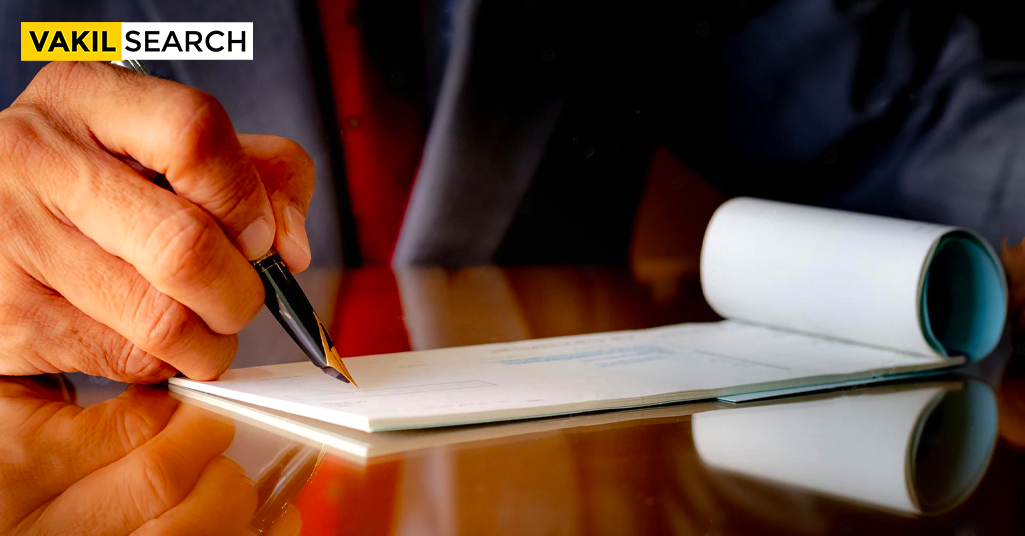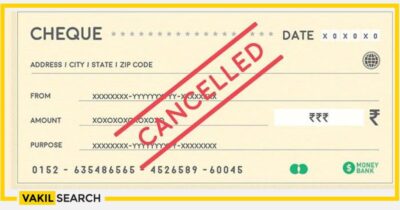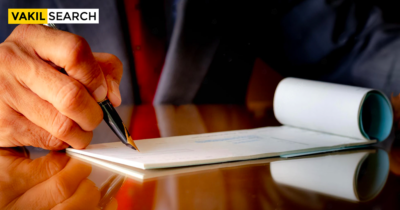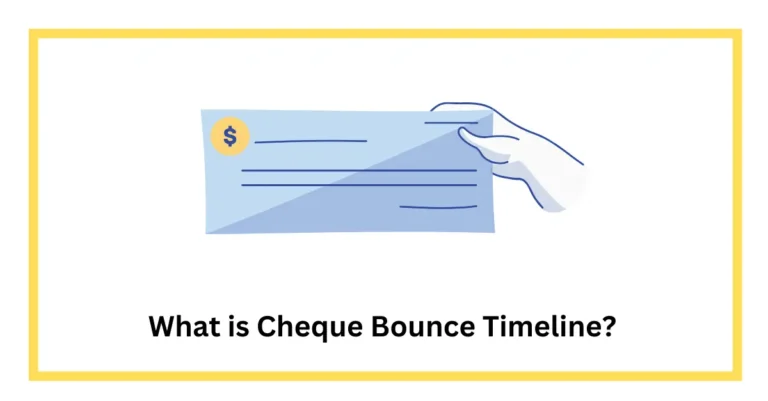Have you ever encountered a notice that says the cheque has bounced? This means that the bank found problems with the cheque (usually causing it to be unable to be cashed), like insufficient balance on your account, another bank stamp or signature.
A Cheque Bounce Legal Notice is given to the drawer of a check when the check is presented for payment and is returned by the bank unpaid. The notice typically includes information about why the check was returned and what the drawer can do to remedy the situation.
Introduction to a Cheque Bounce Notice in India
In India, Cheque bounce Charges are regulated by the Reserve Bank of India (RBI). Under RBI rules, banks are required to give notice to the drawer of a returned check within three days of receiving the check. The notice must include information about why the check was returned, as well as any fees that may be charged to the account holder as a result of the bounced check.
There are several reasons why a check may be returned unpaid. Some of the most common reasons include insufficient funds in the account, stop payment orders, incorrect account numbers, and signature mismatches. If you receive a cheque bounce notice, it is important to take action quickly to remedy the situation. Depending on the reason for the bounced check, you may need to provide additional documentation or make arrangements for alternative payment.
If you have any questions about cheque bounce notices in India, please contact your bank or financial institution for more information.
What You need for Creating a Cheque Bounce Notice in India?
When you deposit a cheque into your bank account, the bank will verify that the cheque is good before it processes the deposit. This process usually takes a few days. If the cheque bounces, the bank will send you a Cheque Bounce Notice, which will include:
- The date of the bouncing cheque
- The amount of the cheque
- The name of the person or company who wrote the cheque
- The reason for the bounce (e.g. insufficient funds)
What Happens When You Get Notified of a Cheque Bounce?
A cheque bounce notice in India can come as quite a shock if you’re not expecting it. This notice means that the cheque you wrote has been returned by the bank due to insufficient funds. Cheque bouncing is a serious offence in India, and can result in heavy fines and imprisonment. If you receive a cheque bounce notice, it’s important to take immediate action to rectify the situation.
The first thing you need to do is contact the person or company who wrote the cheque to you. Explain the situation and try to work out a payment plan. It’s important to get this sorted out as soon as possible, as the longer you leave it the more damage it will do to your reputation. Once you have a plan in place, make sure you stick to it!
If you’re not able to reach an agreement with the person who wrote the cheque, or if they are refusing to pay up, then you can take them to court. This is a long and complicated process, so it’s best to try and resolve the issue directly with the person first.
Cheque bouncing is a serious issue, so if you find yourself in this situation it’s important to take action immediately.
The Consequences of Having a Notice Sent to You
When you receive a cheque bounce notice in India, it means that the bank has returned the cheque to the payee because there were insufficient funds in the account to cover it. This can have serious consequences for both the payee and the payer.
If you are the payee, it means that you will not receive the payment that you were counting on. This can cause financial hardship and may even lead to legal action being taken against you.
If you are the payer, it means that your bank account will be charged a bounced cheque fee. This can damage your credit rating and may make it difficult for you to get credit in the future. It is important to understand what a cheque bounce notice is and how it can affect you before you sign any cheques.
What are the different types of Cheques?
There are many types of cheques in India, each serving a different purpose. The most common type of cheque is the personal cheque, which is used for making payments to individuals or businesses. Other types of cheques include traveller’s cheques, cashier’s cheques, and bank drafts.
Traveller’s cheques are a type of cheque that can be used in lieu of cash when travelling. They are typically used for larger purchases, such as hotel rooms or rental cars. Cashier’s cheques are another type of Bounced Cheque that can be used instead of cash.
These cheques are guaranteed by the issuing bank and are typically used for large transactions, such as home or vehicle down payments. Bank drafts are similar to cashier’s cheques but are typically used for international transactions.
How to Make Sure Your Cheque Doesn’t Bounce?
When you write a cheque, you are responsible for making sure there are sufficient funds in your account to cover the amount of the cheque. If there are not enough funds to cover the cheque, it will ‘bounce’ and you will be charged a fee by your bank. To avoid this fee, make sure to keep track of your account balance and only write cheques for amounts you know you have available.
How to Fix a Check Bounce Notice?
If you have ever written a check that has bounced, you know how frustrating it can be. Not only do you have to pay a fee for the bounced check, but you also have to deal with the embarrassment of having your check rejected. If you find yourself in this situation, don’t worry – there are ways to fix it.
The first step is to contact the person or company who received the check. Explain what happened and ask them to void the check. Once they void the check, you will be able to re-deposit the funds into your account.
If the person or company refuses to void the check, your next step is to contact your bank. They may be able to help you recover the funds from the check. However, if your bank is unable to help, you will need to take legal action against the person or company who wrote the bad check.
There are a few things you can do to avoid having a check bounce in the first place. First, make sure that you have enough money in your account to cover the full amount of the check. Second, write legibly so that there is no confusion about the amount of money being requested. Finally, keep a copy of all checks.
Frequently Asked Questions Regarding a CBN
Q1: What is a cheque bounce notice in India?
A cheque bounce notice in India refers to a formal notice that is issued by a bank to its customers when their cheque has been dishonoured or returned by the payee bank. This notice typically includes information on the reason for the cheque bounce, as well as the next steps that the customer needs to take in order to rectify the situation.
Q2: How can I avoid having my cheque bounce?
There are several things you can do in order to avoid having your cheque bounce in India. First and foremost, you should always make sure there are sufficient funds available in your account before attempting to write a cheque. Additionally, you should double-check the payee information to ensure it is correct, as incorrect information is one of the most common reasons for cheques to be returned. Finally, if you are unsure about anything related to your cheque, it is always best to consult with your bank before attempting to write or cash it.
Q3: What are the consequences of my cheque bouncing?
If your cheque bounces in India, you may be subject to certain penalties from your bank.
Conclusion
A cheque bounce notice in India is a formal notice that is sent to the drawer of a dishonoured or bounced cheque. This notice serves as a reminder to the drawer that they have failed to make good on their financial obligation and that they should take steps to rectify the situation as soon as possible. Cheque bounce notices can be very costly for businesses, so it is important to understand how they work and what you can do to avoid them.
Visit Vakilsearch to get more information!
Read more









